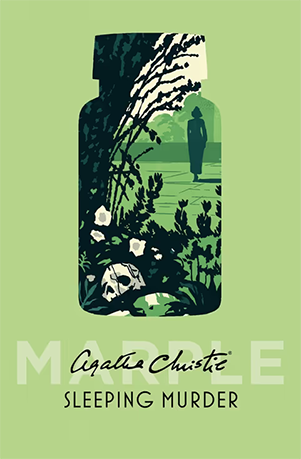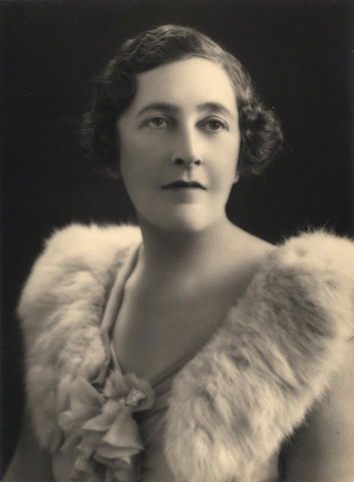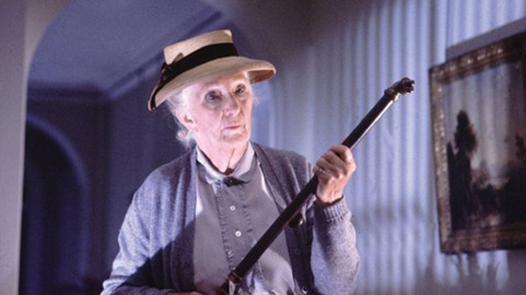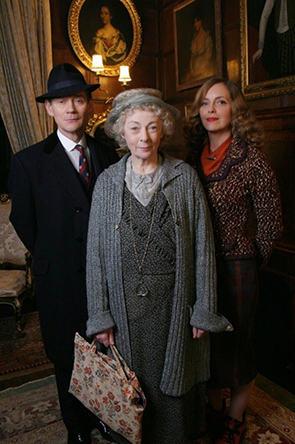
- Category:Crime Fiction
- Date Read:8 August 2025
- Published:1976
- Pages:221



Miss Marple #12
- Category:Crime Fiction
- Date Read:8 August 2025
- Published:1976
- Pages:221

Sleeping Murder is the last Agatha Christie mystery, published in 1976 after her death. But it was written many years earlier. It is set in 1944 and it is thought that the first draft was written during the Blitz in 1940. It very much has the feel of Christie’s mysteries written in the 1930s and 1940s, when some of her best work was published. Christie did something similar with Poirot. She wrote his final story, Curtain, at around the same time. Both books were locked away for many years, with Curtain published just before Christie’s death and Sleeping Murder just after.
Sleeping Murder is subtitled Miss Marple’s Last Case, but it really doesn’t read like it. In books Christie wrote later, such as At Bertram’s Hotel or Nemesis, Miss Marple is obviously older and frailer. Nemesis, the last Miss Marple that Christie wrote, especially reads like a last outing for Miss Marple. But in Sleeping Murder, she is still energetic, getting about town to interview people, working in the garden, even making a high-speed dash up the stairs at the end, to stop another murder. There is nothing about the book that has any feeling of finality about it. Curtain, in contrast, is very obviously Poirot’s last case. Sleeping Murder is like a reversion from the books that were published before it, rather than a final goodbye. If you want to read the Miss Marple books in a progressive order, this one would better fit being read just after The Moving Finger, set in World War 2.
The first part of this book is about repressed memories; memories that come back when our main character, Gwenda, inadvertently buys a house she lived in briefly as a child. She was born in India and raised in New Zealand, after the death of her parents when she was very young. Gwenda arrives in England, a country she thinks she has never previously visited, shortly after her marriage to Giles, her English husband who has been detained overseas on business, possibly for several months. Her intention is to drive around the south of England, looking for a house to buy.
About a week after she starts looking, she arrives in the small resort town of Dillmouth and immediately likes the area. She also sees a For Sale sign on a small Victorian house and somehow feels like this is her house. She makes an offer. It is only a month later when Gwenda is undertaking some renovations that things start to get weird. After accidentally walking up to a solid wall several times when walking from the drawing room to the dining room, she asks the builder if it would be possible to put a door in. He takes a look and tells her there is already a door there that had been plastered over. She instructs her gardener to remove some large shrubs from outside the drawing room window that block both the light and the view and to put in some steps so she can both enjoy a view out the window and enter her garden easily. When the gardener removes the shrubs, he finds there are already steps that had been hidden by the plants. Furthermore, she is sleeping in a small room, possibly a former nursery, and plans to replace the hideous mustard walls with a cheerful wallpaper, possibly decorated with poppies and cornflowers. She thinks she has seen such a wallpaper somewhere. There is a cupboard in the room she can’t open. It has been painted over several times. The builder gets the cupboard open and they find the original wall covering inside: a cheerful wallpaper with poppies and cornflowers.
Convinced she is going mad, Gwenda flees to London to visit distant relatives, as a break from a house that she knows way more about than she should. That doesn’t work out too well when her hosts take her to see the Duchess of Malfi. Near the end of the play there is a line that causes Gwenda to scream and run from the theatre, convinced she is insane: “Cover her face. Mine eyes dazzle, she died young . . .”. The line stirs a memory: a memory of looking down through the banisters in the house at the dead body of ‘Helen, and of someone saying those same words over the body.
This is where we have a mystery to solve. Luckily for Gwenda, Miss Marple was also part of her group at the theatre and she steps up to provide comfort and reason. She helps Gwenda to logically work out that she must have lived in the house as a child, and by coincidence, ended up back in the same house as an adult. Gwenda’s New Zealand relatives confirm that she did live briefly in the south of England before coming to them, after her father remarried.
It’s all good, Gwenda isn’t insane, it’s all just a remarkable coincidence. But of course, if Gwenda’s knowledge of the house is based on real memories, then the vision of seeing a woman strangled must also be true.
This is where Christie’s mystery really starts, with Gwenda and a newly-returned Giles intent on finding out what happened eighteen years ago. Miss Marple, of course, joins them, ostensibly to help them work out what has happened, but really because she is worried about the implications. She has already reasoned the truth of the situation. The only ‘Helen’ associated with the property is Gwenda’s stepmother, thought to have left her husband to run away with another man. And Gwenda finds out that her father died in an asylum, self-committed because he swore that he had strangled his wife, even if no one else believed him.
Murders investigated in retrospect is a plot device that Christie often used. Nemesis, the previous Miss Marple, is another example. Others I can quickly think of are Five Little Pigs (an excellent example of the idea) and Elephants Can Remember. But Christie refuses to be formulaic. Each time she uses this idea, she mixes it up and makes it a little different.
In a way, this is one of Christie’s simpler mysteries. There are not many characters to keep track of, for one thing, and limited motives. Perhaps this is why the story moves very quickly. Christie didn’t need to waste much time establishing a large cast. The limited characters are all well-written and believable . . . well, as believable as any characters can be in a Christie mystery. Gwenda and Giles make a sweet couple, supporting each other as they stumble around hopelessly, trying to solve their murder. Each time they feel like they’ve hit a dead end, Miss Marple comes through with another lead for them to follow.
And Miss Marple is in very good form. She plays up to stereotypes and acts as people expect innocent looking old ladies to look and behave: “I’ve been gossiping a little. In shops – and waiting for buses. Old ladies are supposed to be inquisitive. Yes, one can pick up quite a lot of local news.” And she gets some very dry lines to throw at Gwenda and Giles, such as, “You believed what he said. It really is very dangerous to believe people. I never have for years.”
One thing I found surprising is that Miss Marple allows things to continue as long as she does. She obviously solves the murder very quickly. She admits to Gwenda at the end that she was keeping an eye out to make sure the murderer didn’t strike again to preserve his secret. She could have wrapped it all up quickly, but then we wouldn’t have had the dramatic scene at the end of the novel, where the murderer is revealed. After all, this is fiction, and a writer has certain expectations she must fulfil for her audience.
Overall, this is a good, basic mystery. It’s not the absolute best Christie mystery, but it’s a great concept. It has appealing characters and it is well told. I enjoyed it.

Adaptations


Non-English Adaptations
